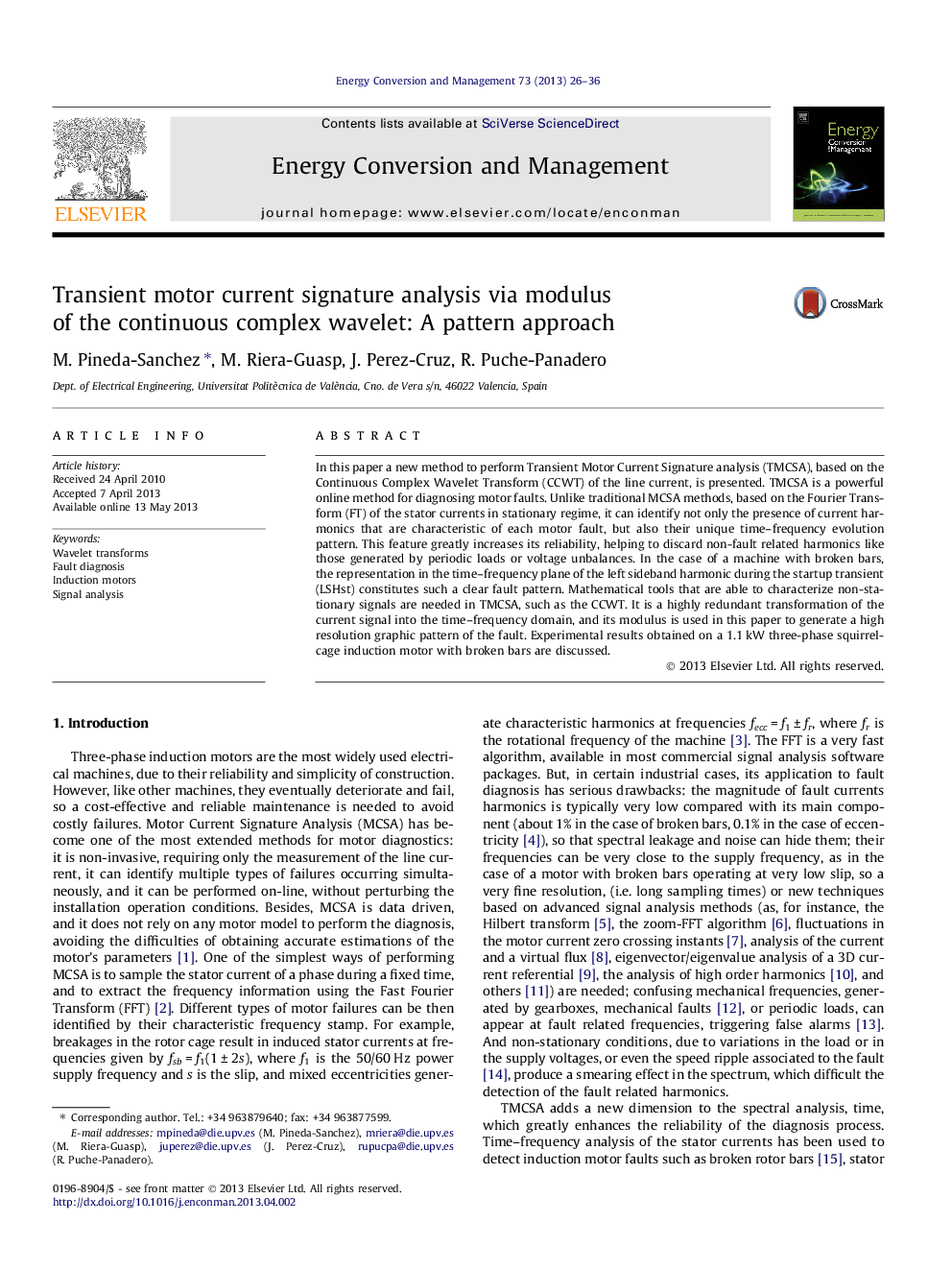| Article ID | Journal | Published Year | Pages | File Type |
|---|---|---|---|---|
| 764235 | Energy Conversion and Management | 2013 | 11 Pages |
•Transient MCSA detects motor faults via time–frequency analysis of the current.•The modulus of the CCWT shows the current harmonics in the time–frequency plane.•The choice of the DOG as mother wavelet is made after a comparative analysis.•Each motor fault harmonics displays a different pattern in the generated image.•A commercial motor with a rotor broken bar has been used to present the method.
In this paper a new method to perform Transient Motor Current Signature analysis (TMCSA), based on the Continuous Complex Wavelet Transform (CCWT) of the line current, is presented. TMCSA is a powerful online method for diagnosing motor faults. Unlike traditional MCSA methods, based on the Fourier Transform (FT) of the stator currents in stationary regime, it can identify not only the presence of current harmonics that are characteristic of each motor fault, but also their unique time–frequency evolution pattern. This feature greatly increases its reliability, helping to discard non-fault related harmonics like those generated by periodic loads or voltage unbalances. In the case of a machine with broken bars, the representation in the time–frequency plane of the left sideband harmonic during the startup transient (LSHst) constitutes such a clear fault pattern. Mathematical tools that are able to characterize non-stationary signals are needed in TMCSA, such as the CCWT. It is a highly redundant transformation of the current signal into the time–frequency domain, and its modulus is used in this paper to generate a high resolution graphic pattern of the fault. Experimental results obtained on a 1.1 kW three-phase squirrel-cage induction motor with broken bars are discussed.
Graphical abstractFigure optionsDownload full-size imageDownload as PowerPoint slide
